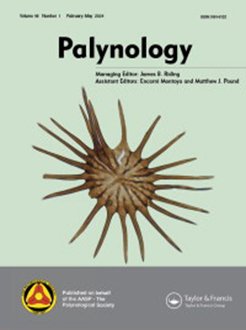Little is known about the agroecological implications of the Asian honey bee Apis cerana Fabricius in its vast native range including southeast India. To identify the foraging preferences of this generalist species, we collected 388 corbicular pollen samples over three years at Merveille, an eco-restoration site in Puducherry region, southeast India. Pollen was collected twice or thrice weekly from March 2018 to December 2021 in three locations within the site. We used canonical correspondence analysis to evaluate how average daily temperature, humidity and other meteorological changes over the years would influence A. cerana's diet. We show that (1) A. cerana has a large dietary niche (87 pollen taxa), but essentially feeds on Cocos nucifera (all year long) and on Borassus flabellifer, Turnera, Acacia, Mollugo/Trianthema, Leucaena/Prosopis, Portulaca, Poaceae, Syzygium-t, Dodonaea viscosa and Boerhavia seasonally; these were most frequently and abundantly foraged at all locations. (2) In all locations, bees preferentially feed on arboreal plants (44 taxa). (3) Bees' pollen diet varies in composition according to seasons. It is also least diverse in the hottest and driest months (March-May) with 2–4 taxa against 7–13 taxa in other months. (4) In 2021, which was more humid and slightly cooler than 2018 and 2019, bee diet included more pollen of Cyperaceae, Dodonaea viscosa, Liliaceae and fallow land weeds such as Boerhavia and Mimosa pudica. In conclusion, corbicular pollen loads of Apis cerana provide a long and continuous record of the bee's diet and its changes through time and space. The diet changed according to subtle changes in humidity and temperature as also drastic changes in rainfall at the study site, likely reflecting changes in the floral resource availability and the bees' preference. The sustained presence of this bee species within its native ranges can be a bellwether of pollinator friendly habitats.
How to translate text using browser tools
7 February 2024
Diversity Matters: Diet of Apis cerana in Southeast India Includes One Consistently Occurring and Several Seasonally Available Floral Sources
Jean Lazar,
Srinivasan Prasad,
Doris Barboni,
Lipi Das,
Vadivelu Kumaresan,
Krishnamurthy Anupama
ACCESS THE FULL ARTICLE
It is not available for individual sale.
This article is only available to subscribers.
It is not available for individual sale.
It is not available for individual sale.

Palynology
Vol. 48 • No. 1
February–May 2024
Vol. 48 • No. 1
February–May 2024
entomo-palynology
honey beediet
insect pollinator
melissopalynology
pollen loads
Puducherry





